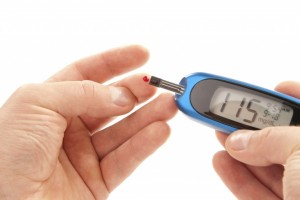
Use of artificial sweeteners is widespread, especially at Yale where Splenda is diligently placed alongside sugar in the dining halls and cafes to offer students a non-caloric option. For those who choose artificial sweeteners as a healthy alternative to sugar, recent research suggests that you may want to reconsider. The safety of products like Splenda, Sweet’N Low, and Equal has always been the topic of contentious debate, and findings published last month in Nature by a team led by Eran Elinav at the Weizmann Institute in Israel now provide support for doubters of artificial sweeteners. By administering doses of artificial sweeteners to mice and humans, the researchers concluded that these products may in fact elevate glucose levels, causing glucose intolerance, by modifying bacteria in the gut.
Glucose intolerance is an indicator of metabolic disorders like diabetes and it occurs when a person has normal fasting blood glucose, but elevated levels after consuming glucose. In the study, mice given sucralose (Splenda), saccharin (Sweet’N Low), and aspartame (Equal) for a week experienced glucose intolerance while mice given just water or glucose exhibited little change. Because saccharin caused the greatest glucose intolerance, the researchers chose to use it in subsequent experiments.
Next, the researchers sought to test whether the microbiome might be responsible for this response to artificial sweeteners. They answered this question by using antibiotics to rid the mice of their gut bacteria. Surprisingly, these “germ-free” mice no longer exhibited glucose intolerance when given saccharin. However, when germ-free mice received a fecal transplant containing the gut bacteria of mice drinking saccharin, glucose intolerance returned.
This finding prompted a thorough genomic analysis of the bacterial populations of mice drinking saccharin compared to controls. As expected, Elinav’s team found that saccharin consumption altered the bacterial population of the microbiome. More significantly, increases in the specific bacteria associated with carbohydrate metabolism, type 2 diabetes, and inflammation were discovered, providing direct links between the microbiome changes and glucose intolerance.
The compelling results in mice motivated the researchers to begin studying human subjects, with intriguing preliminary results. When seven individuals who did not normally consume saccharin were given the FDA approved maximal acceptable daily intake for a week, four developed glucose intolerance. Subsequent microbiome analysis of all seven individuals showed that the four developing glucose intolerance exhibited a change in their gut bacteria, whereas the others did not. Furthermore, when the microbiome of the four affected subjects before and after saccharin consumption was transferred to germ-free mice, only the animals that received the bacteria from after saccharin exposure developed glucose intolerance. This result shows a possible causal link between the microbiome changes resulting from saccharin exposure and glucose intolerance.
Although the results of the study are cautionary, a few important points about the experimental design should be considered before deciding to avoid artificial sweeteners. The mice and humans used in this study were given the FDA maximal accepted daily intake of saccharin, which corresponds to consumption of nine to twelve packets a day. And while the amount of saccharin administered was high, in the human study, the sample size was extremely small and based on only a week of consumption. Elinav himself told the New York Times, “We don’t think the body of evidence that we present in humans is sufficient to change the current recommendations.” However, this research certainly does raise concerns about the high usage of artificial sweeteners to control blood sugar or lower caloric intake. With further work, it could eventually lead to a better understanding of how the microbiome influences metabolism and the development of treatments for metabolic disorders like diabetes.
